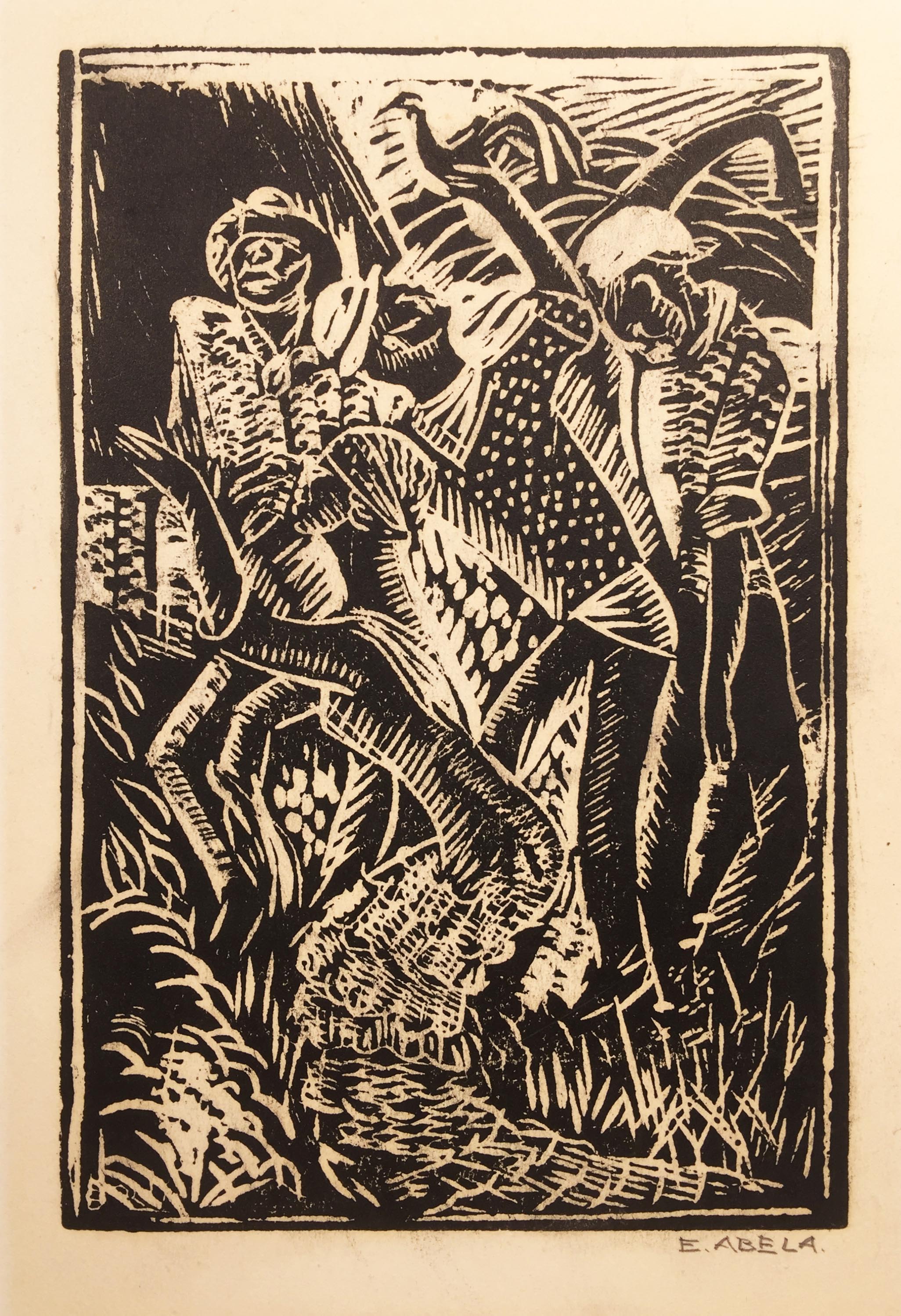
Eduardo Abela
Harvest or Dance or Festival
Engraving, 20th Century, Cuban.
Submitted to the American National Committee of Engraving in the 1940’s for Graphic Art of the Western Hemisphere.
Image: 6 x 4
Paper: 11 5/8 x 8 5/8
Excellent condition.
Inventory Number: 10385
Pencil signed by artist.
Three figures in dance movements.
Eduardo Abela (San Antonio de los Baños, Cuba 1889 – Havana, Cuba 1965) studied at the San Alejandro Academy of Fine Arts, graduating in 1921. He lived in Spain from 1921 to 1924 and in France from 1927 to 1929 in an effort to expand his artistic and cultural horizons. In Paris, he socialized with a group of vanguard Cuban writers and artists that included Alejo Carpentier, who encouraged him to paint Cuban themes in addition to introducing him to the latest currents in art. After experimenting with various modern styles, Abela developed his own, influenced by Jules Pascin and Marc Chagall. His Parisian stay culminated with a show at Galerie Zak in November of 1929, where he unveiled a series of paintings and drawings inspired by the Afro-Cuban and Creole cultures.
Like many of his contemporaries,Abela “discovered” and integrated Cuba in his art while living abroad, motivated by nostalgia. Upon his return to Havana, Abela’s focus turned to political and social caricatures, inventing a character called El Bobo (The Fool), who appeared in El Diario de la Marina from 1930 to 1934. El Bobo quickly gained national recognition as a critical voice opposing the dictatorship of Gerardo Machado.
By the second half of the 1930’s, Abela returned to painting, employing a naturalistic style influenced by the Mexican Muralists, idealizing the Cuban peasant and countryside, as captured by the painting Los Guajiros(1938). In 1937, he was the director of the short-lived Free Studio of Painting and Sculpture, which offered an alternative to the elitist and highly structured artistic training of San Alejandro Academy. Abela served as Cuba’s cultural attache to Mexico from 1941 to 1946 and to Guatemala from 1947 to 1952. The last and most productive phase of his artistic career began in the early 1950s and lasted for a decade. This so-called “magic period” was characterized by an expressionistic representation of a fantasy world inhabited by women, children, and animals.
The paintings and caricatures of Abela have been extensively exhibited in Havana since the 1920s, and to a lesser extent in Spain, France, Mexico, Guatemala, and the United States. He won several awards for his paintings, including prizes at the National Salons of 1938 and 1956. His works are housed in numerous private collections in Cuba, where he is also well represented at the National Museum in Havana. Outside of Cuba, his paintings reside in private collections in the Caribbean, Central America, the United States, Spain, and France.

